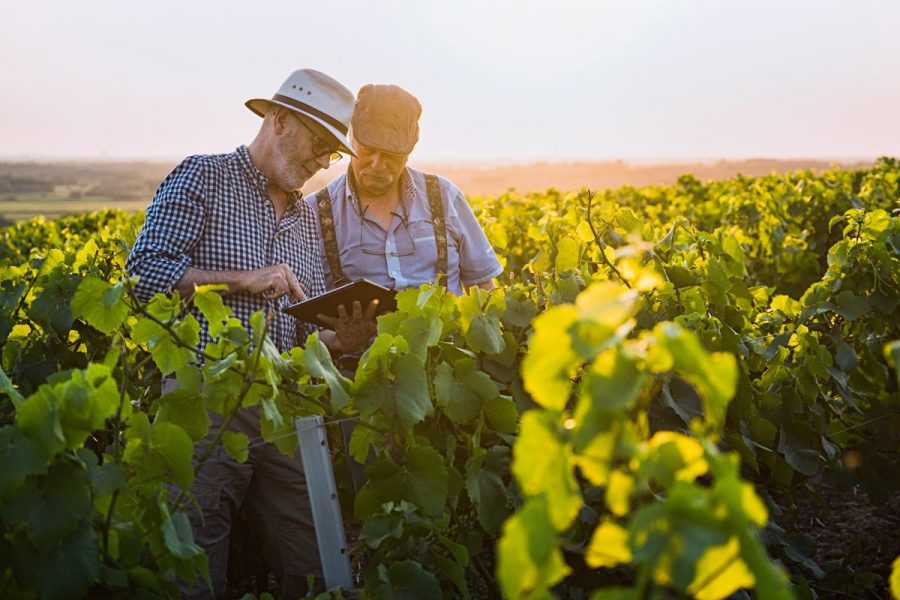Why Irrigation Automation Hasn’t Been Widely Adopted… Yet

It’s the 21st century and mechanical automation has been around for a long time. When it comes to irrigation, most residential and commercial properties have had automated landscape sprinkler systems for decades. Electromagnetic solenoid valves were invented over a century ago, and wireless remote control devices have existed for almost as long, but wireless irrigation automation has only been implemented in vineyards, in earnest, in the last 10 years. Still, most vineyards rely on having boots on the ground to turn valves on and off.
So, why hasn’t irrigation automation been widely adopted in vineyards? There are a few common barriers to automation in the vineyard that are perhaps the most obvious to those who farm the land: reliability, cost, and connectivity.
Growers need reliable irrigation systems
Simple systems using manual valves have endured for so long because they’re easy to understand, maintain, and use. Many automated irrigation systems on the market are cumbersome and have one fatal flaw: a lack of real-time feedback. Without built-in flow and pressure sensing, it’s impossible for growers to know if their irrigations are being executed precisely as scheduled. Leaks may go undetected, and some plant blocks may be over or under watered. Automated valves alone may save some labor time, but they fail to provide peace of mind, to the extent that many growers abandon plans to automate all together.
Grapevines can be finicky crops, and blocks within a single vineyard may have varying soil types or be planted to different grape varietals that require specific irrigation regimens. Most growers are only able to estimate how much water is actually delivered to each block based on the duration of the planned irrigation cycle. In addition to having complete, real-time flow data for each block, a truly dependable irrigation system for grape growers means being able to deliver water at a specific volume, rather than an estimated volume based on time.
Existing irrigation automation systems for vineyards are costly
In other sectors of the agriculture industry, farms operate at a more scalable level, with hundreds or thousands of planted acres, and they typically require less precise irrigation. It can be less expensive to install an automated system, per acre, at a larger scale, especially when precision is less essential. Commercial farms, growing cash crops like corn and soybeans, have greater financial resources and often a more-immediate cash flow, making irrigation automation more attainable.
By its very nature, grape growing for high quality winemaking is almost always done at a smaller scale. The median acreage for vineyards in California, for instance, is 15. Those 15 acres may be divided up into even smaller plant blocks, each requiring their own specific irrigation regimen. That requires a more complex irrigation system, and if it’s automated, that means more hardware (in the form of a telemetry system and valves) and maintenance costs.
Existing systems require installers to combine individual components to create a full system. There’s the telemetry hardware, which usually involves a cellular, satellite, internet, or radio transmitter that’s built to withstand all weather conditions. Then there’s the actual valve - typically operated by a solenoid using electromagnetics. But to build a complete system, feedback sensors, like pressure switches and flowmeters, are essential so that the user can confirm that their system is indeed operating correctly. With all of these individual components required, costs add up real fast, not to mention the labor required to install everything, one-by-one.
The other limiting factor for existing technologies is connectivity
The world’s best vineyards are often in remote places, where the internet is not an available resource. Topography is often highly varied, which is one thing that makes winegrowing so fascinating. Even within a single vineyard, topography can cause multiple microclimates, permitting different grape varieties to thrive or the same grape variety to express itself differently. But while steep hills and treelines may create opportunities for a winegrower, they may also cause headaches when attempting to install an automated irrigation system. Like your home wifi system, telemetry systems may struggle to connect when the signal is blocked by a natural obstruction.
Between reliability issues, financial costs, and technological limitations, existing irrigation automation systems may be somewhat effective but slow to positively impact a grower’s bottom line.
Lumo’s smart irrigation valve provides next level visibility and accountability
Rather than a system of individual components, Lumo offers an all-in-one solution, with control and monitoring built-in, making it cost effective for small and large-scale operations. Lumo’s system uses comprehensive, intuitive software to manage a network of smart water valves, which are self-contained devices with flow and pressure sensors for real-time feedback. Lumo is the first valve to be completely wireless and internet-connected with a user-friendly interface, operating on a mesh system using proven technology that is capable of navigating vineyard terrain.
Lumo gives growers unprecedented control of their irrigation systems and invaluable insights into the health of their systems with volume-based scheduling and leak detection. Lumo’s software allows users to easily view and interpret real-time data from flow sensors to confirm if irrigations are operating as scheduled or to identify system errors. If flow through a valve is above or below the acceptable threshold, growers can choose to manually shut their system down, or program the software to automatically end the irrigation according to the volume of water actually delivered. This precision control and reliability is priceless.
A simple yet powerful tool, Lumo allows growers to better track and understand their water use, season after season. Combining precision irrigation with illuminating reporting, Lumo makes it easy to see the ROI in irrigation automation for winegrowers, whether during an irrigation cycle or at the end of the growing season.
To inquire about Lumo's early access program, which provides participants with priority access to Lumo, visit lumo.ag or email [email protected].